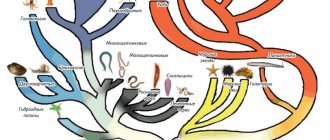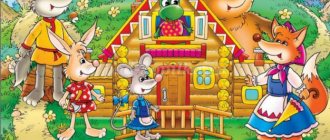Once upon a time there were nesting dolls
The comic “Once upon a time there were nesting dolls” tells an amazing story about wealth that cannot be bought because it is priceless, and is called happiness. The musical film, rich in Russian folk melodies, was shot by director Caesar Orshansky at the Kyiv Nauchfilm studio. The characters in the film are very unconventional: the beautiful and pompous Matryoshka sisters, the cheerful boy Vanka-Vstanka and the Dymkovo toys.
At the beginning of the film, viewers are introduced to the four Matryoshka sisters. The eldest is the most hardworking and efficient, the middle ones have less ability to run a home in accordance with their age - the younger they are, the less abilities they have, and the youngest does not have these qualities at all, since she is an excellent singer. However, this quality is not very highly valued in their native village and region. No one noticed that her talent helps everyone, improves their mood and brings a smile to people’s faces. When she sings, the work goes easier, everything comes into her hands. Who can explain this to anyone, let alone the suitors who came to ask her sisters as wives? The elder sister had a lot of them, more than anyone, but no one came to the younger sister. Therefore, the elder sister decided that none of them would marry until she found a groom.
She said so, but no one shook hands with the younger sister, and the older sisters sat and sighed - they grieved and cried. The youngest nesting doll saw this and decided to open the way to the wedding - she jumped from the bridge into the river. But it was difficult for the doll from the wooden nest to drown, but it was easy for her to swim. She swam to the village where a strange boy named Vanya lived. He performed all kinds of tricks and made people laugh.
And so it happened that Vanka found a singing nesting doll and brought it home. This is how it happens sometimes - you need to take a bold step to find your happiness!
But the story doesn’t end there; to find out the continuation, you need to watch the cartoon “Once Upon a Time, Matryoshkas”. Many adventures await them, and the Smoky Horseman is already galloping to the newlyweds’ house, but he will not come to them with good intentions...
As for a children's film, the screenwriter of this very philosophical fairy tale is Alexander Kurlyandsky, the same one who wrote the popular animated series “Well, wait a minute!” There are also adventures and chases here, but this story is more human, emotions are taken from people’s lives, so sacrifice, loyalty and love are in order here.
“Funny nesting dolls” is an educational activity for children 3 years old.
Author: Tatyana Nalivaykina Published March 26, 2015
Playing is a very serious activity for a child. During the game, the child learns about the world around him through perception, imaginative thinking, and imagination. It develops memory, attention, speech, intelligence and imagination. Children who are “deprived” of play and storytelling do not adapt well to school and do not find contact with their peers.
If you want to teach a child something, you need to interest him and make learning fun. It is desirable that the equipment be bright, colorful and noticeable in the game. It’s great if these are toys that he can make with his own hands or with the help of older brothers (sisters), it’s good if these toys can be assembled or disassembled.
What else to read: Summer camp games. Ecological game "Chamomile"
When teaching one-on-one with a three- or four-year-old, it is much more difficult to get their attention than when working with a group. A child is characterized by rapid changes in moods and feelings. Therefore, we must take into account many features related to age and personality.
Our session is divided into separate mini-games. Each game will last from 2 to 5 minutes. We have tried to include basic activities for the development of a child aged three to four years. And, of course, a prerequisite for each event is a good mood, a friendly atmosphere and fun.
Matryoshka dolls are the “heroes” of our activities. They will help to combine them thematically, make them imaginative and interesting for the child.




